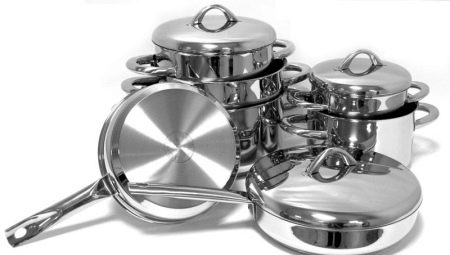Metal utensils have been popular for centuries. Nowadays, the range of products is wide - on sale are presented products of various purposes made from a variety of materials with different types of coatings. It is worth dwelling in more detail on the features of metal dishes.
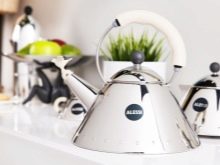
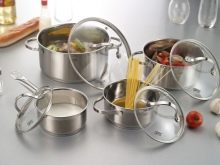
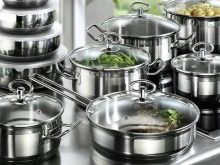
Features
Metal utensils are often used in everyday life, as well as in food service outlets due to extremely high functional, ergonomic and aesthetic characteristics. Metal dishes have the following features:
- metal products are durable - with proper care they can be used for more than a decade, keeping their appearance and technical and operational parameters unchanged;
- environmental friendliness - high-quality metals used for making dishes do not emit harmful and toxic substances, hazardous chemical elements during cooking, they do not contain radiation, which means they are completely safe for use in everyday life;
- reliability - metal kitchen utensils are characterized by increased strength, resistance to temperature extremes and deformations;
- ease of care - the use of dishes made of steel, aluminum, cast iron and other alloys does not require specialized detergents, cleaning products can be done with the most common gel for washing dishes and a sponge;
- aesthetics - usually metal utensils have a beautiful, noble sheen or can be processed with decorative coatings, due to which they harmoniously fit into any interiors;
- resistance - this option is perhaps the only one that can withstand daily use for a long period of time;
- cost - if you compare metal products with other kitchen items, their price will be much more profitable, especially if you consider the cost from the standpoint of price and quality.
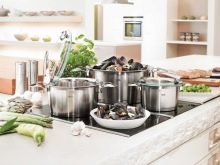
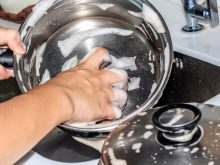
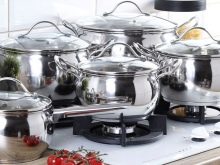
Of the minuses, high thermal conductivity can be noted - metal objects quickly heat up even from cooked food and drinks, which means that you can get burned during lunch.
Important! All of the listed advantages of metal utensils apply only to quality products made in compliance with all established GOSTs and hygiene safety rules. Unfortunately, there are a lot of fakes on the market, the use of which may be unsafe for the consumer.
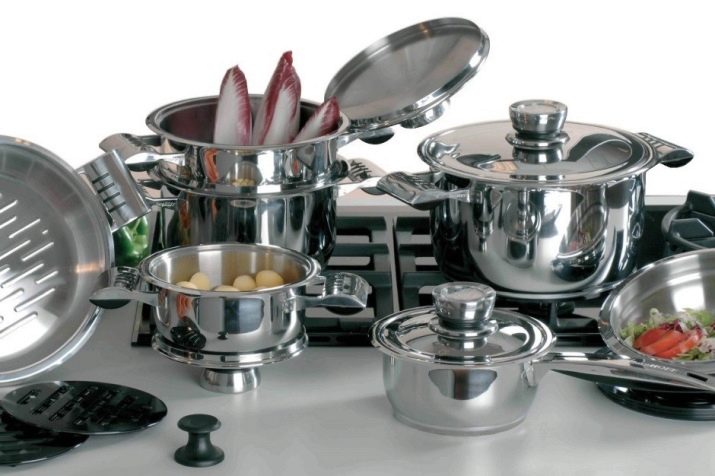
Materials, their pros and cons
For the manufacture of kitchen utensils, a wide variety of metals are used - dishes are made from tin, brass, steel, nickel, aluminum, in stores you can find iron, tin, as well as bronze and silver products. Steel utensils include all enameled, galvanized, painted and "black" products, as well as stainless steel and frying pan utensils with non-stick coating. It is presented as utensils directly coming into contact with food (plates, bowls, as well as cups, salad bowls, all kinds of forks, spoons, knives, etc.), and not (basins, cans, tanks or buckets).
Steel is characterized by increased safety and harmlessness, it meets all sanitary requirements and can be decorated.
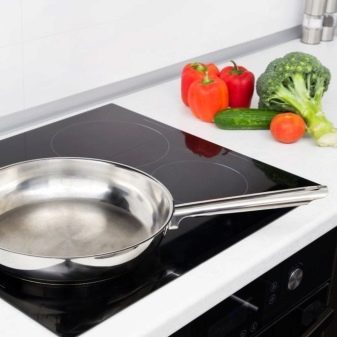
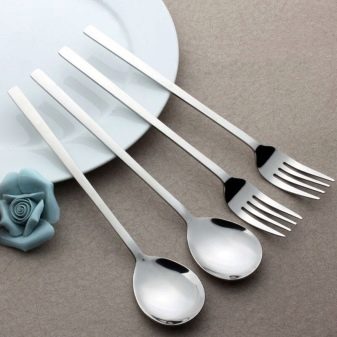
The disadvantages of such devices include reduced mechanical security of the applied coating. So, galvanized dishes are not used for contact with food products, since zinc can react with alkalis and acids, therefore, mainly water tanks are made from this material. Colored dishes are most often used for the production of containers designed to move water supplies.
Steel products are also made without coating - it is called “black” and is represented by a wide variety of objects: pans, pans, baking trays and baking dishes.
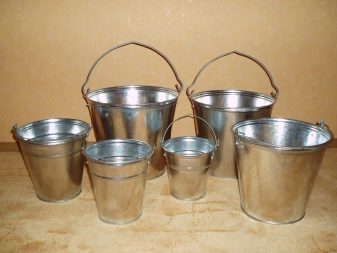
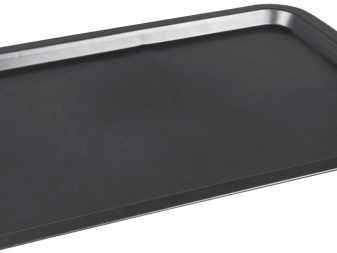
Stainless steel utensils are characterized by extremely high operational properties. It has a strictly “food” purpose and is more expensive than other types of steel utensils - it is used for making pots, as well as pans, pots, plates, coconuts, bowls and many other products.
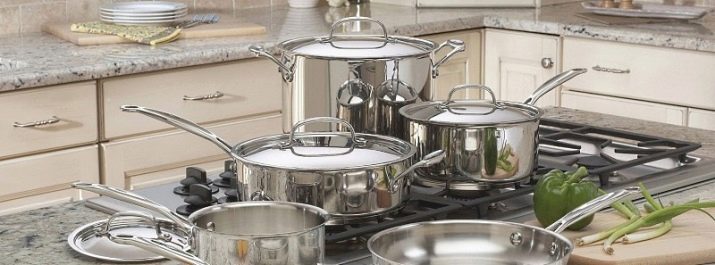
Cast iron appliances for the most part are represented by cooking containers - pots, massive pots, pans and roasters. Such dishes are characterized by reduced thermal conductivity, the food does not burn in it, while the heat is retained inside the container for a long time, so the dish “reaches” and turns out to be especially tasty.
However, cast iron is a heavy metal, besides unaesthetic, therefore products from this alloy are gradually losing their popularity.
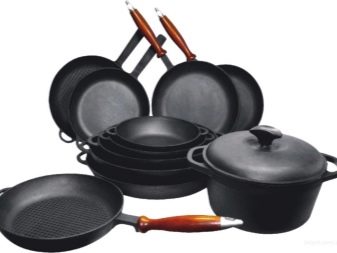

In the manufacture of dishes from non-ferrous metals, as a rule, use aluminum, copper and all kinds of alloys with the application of a mandatory protective layer. Such kitchen utensils look very impressive and stylish, but if the integrity of the protective layer is damaged, harmful substances will start to come into the food, therefore it is not recommended to store food in such a container, and only soft washing gels should be used during cleaning, the use of hard brushes and abrasive powders.
Utensils made of copper alloys are represented in most cases by brass and cupronickel products. This is a stylish and expensive utensil that is used for direct contact with food products - teapots, glasses, glasses, milk jugs, salad bowls, caviar, bowls and all kinds of gravy boats.
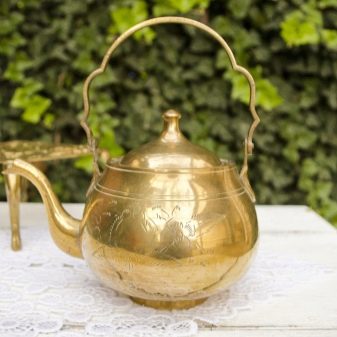
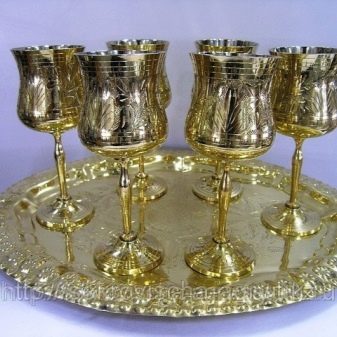
Types of coverage
To cover services and kitchen utensils, silver is most often used, less often gold, as well as enamels, varnishes and glazes. Widespread chrome and nickel-plated dishes. The most popular dishes with non-stick coating. It is intended for cooking without the use of vegetable oils and other fats, respectively, the finished dish does not contain additional calories and carcinogens. Such food is considered more delicious and healthy.
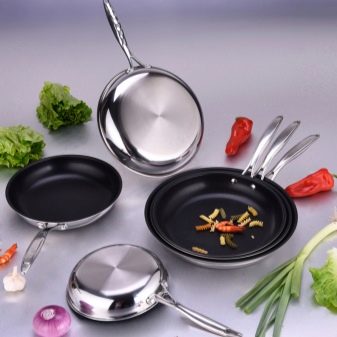
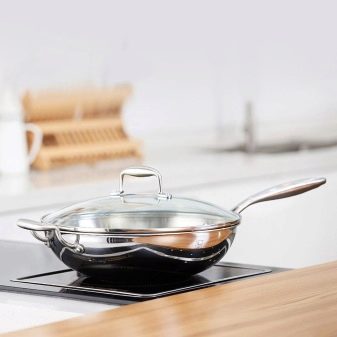
However, some scholars argue that teflon coating is potentially unsafe for humans. When heated to +220 degrees, the coating begins to emit benzene and other harmful substances, so such pans and pans are not recommended for baking in the oven. At elevated temperatures, there will be no benefit from such a dish. A worn or damaged non-stick coating can cause a lot of damage to a person, so you should only buy such dishes in trusted stores and give preference to well-known brands.
Such products are not cheap, but if you do not have money for a quality pan, it is better to buy a product with a titanium coating.
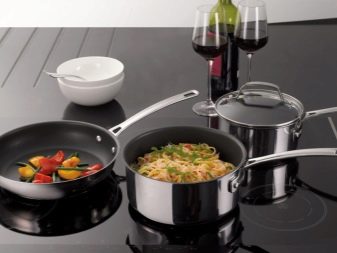
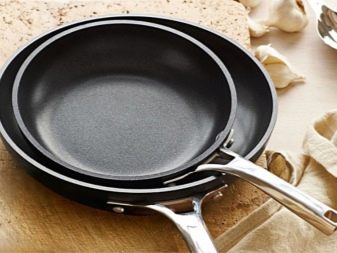
Enamelled cookware has been loved by many housewives for several decades. Enamels were invented specifically in order to protect products from metal ions, which can be released during the heat treatment. When combined with food, they form harmful salts, dishes become dangerous to humans. Since enamel serves as a barrier between food and harmful metals, but its integrity must be monitored - the surface of the coating must remain smooth and glossy, utensils with chips, cracks, signs of dullness and oiliness are not allowed.
The zinc coating effectively protects the dishes from rust, but upon contact with hot liquids and weakly acidic solutions of the coating, their hydroxide film is destroyed, and harmful substances are released.
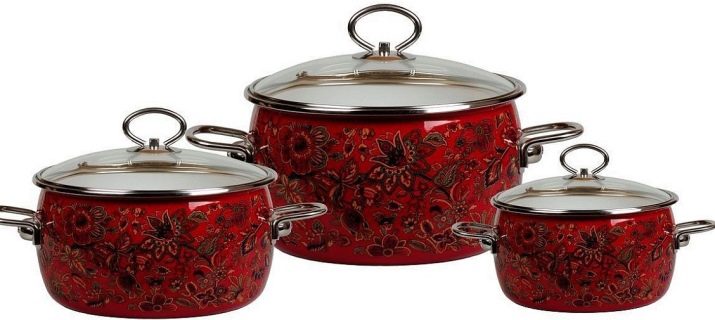
Variety of assortment
As we have already mentioned, depending on the features of use, food and non-food utensils are distinguished. The first category includes containers for storing and transporting food and other household needs. The classification of metal food utensils includes the following elements:
- items for heat treatment of food;
- tableware and cold dishes;
- containers for storing food products.
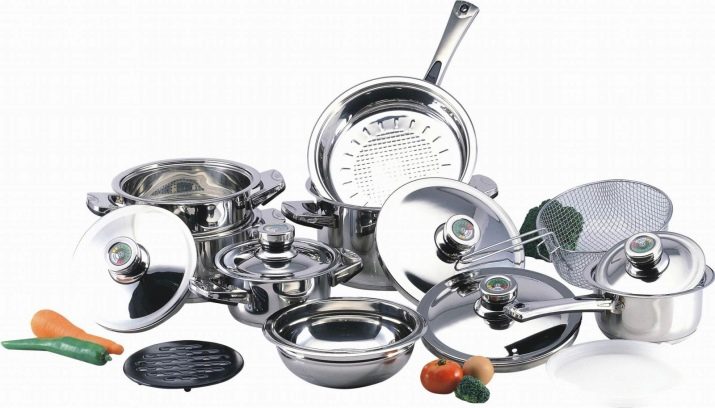
Cookware used to cook hot dishes usually involves items such as:
- pans
- pans
- pots for baking;
- bonfire cooking boilers;
- ducklings, as well as goslings and fishermen;
- heat resistant baking sheets;
- teapots and ordinary teapots;
- baking tins;
- tanks for sterilization of cans.
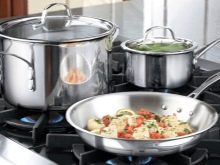
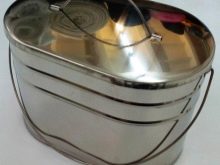
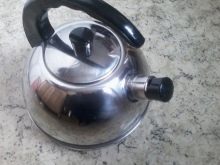
Cutlery for serving cooked meals includes the following:
- dishes of different sizes;
- bowls;
- flowerpots for sweets, bread and fruits;
- Circles
- buckets for cooling drinks;
- creamers, as well as creamers;
- Caviar
- sauceboats;
- vases for pastries and cakes;
- trays
- cheese cakes;
- sugar bowl.
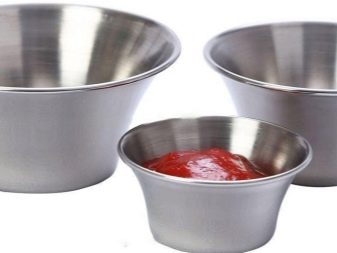
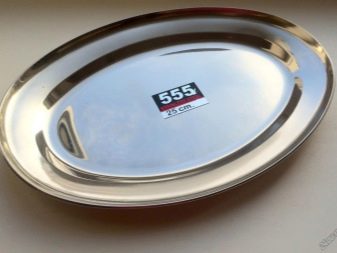
The range of products used for transportation and storage of food consists of the following elements:
- buckets;
- cans;
- sudoki;
- tanks for liquids.
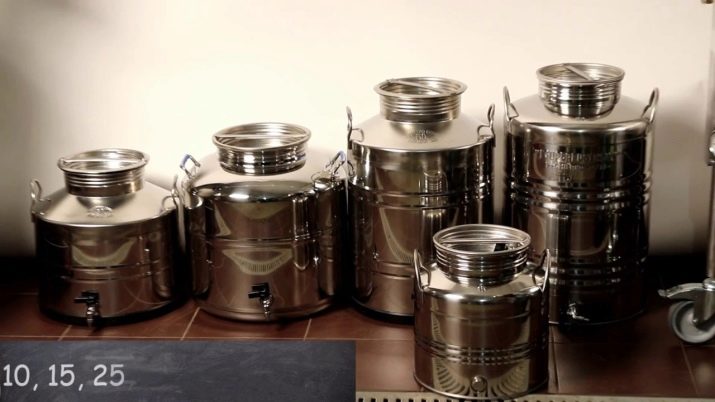
A separate place in the classification is occupied by non-food utensils, elements such as:
- containers for washing;
- basins and baths for bathing;
- cans;
- all kinds of cans;
- troughs for moving non-food products.
Due to the variety of shapes, as well as sizes, decor items, the design of handles, covers and types of sides, the maximum breadth of the assortment is achieved. So, the handles are cast, hollow or stamped. Lids of kitchen utensils are onboard, as well as overhead or inset. There are also different ways of decorating dishes - the most popular are stencil and decal.Engraving and solid roofing are widespread. According to the method of production, forged and cast dishes are distinguished.
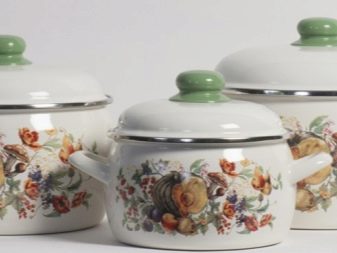
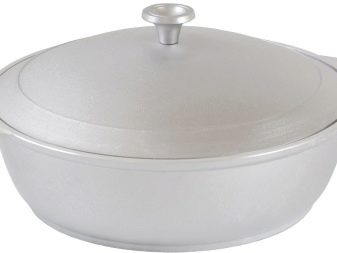
Criterias of choice
When choosing metal utensils several recommendations need to be taken into account.
- Pots intended for electric stoves must have a thick bottom - at least 2 mm. The bottom of such dishes is usually tightly in contact with the surface of the burner, so it should be no less than its diameter.
- It is not recommended to buy dishes with defects such as a violation of the smoothness of the coating, unevenness, tubercles, bubbles and gaps of enamel, as well as fish scales. But the defects in the patterns of the decorated kitchen utensils (blurred contours, slight burnout, paint erosion) do not affect the operational properties of kitchen appliances.
- In accordance with the quality requirements, the inner enamel can be blue, white, black, beige or grayish blue. All other dyes used to create the enameled coating create high concentrations of potassium and manganese salts. Upon contact with a hot dish, they pass into food, leading to serious illness.
Of particular danger are pots and other cooking containers in which the inside is painted yellow, red or brown. These colors are usually used for the exterior design of kitchen utensils.
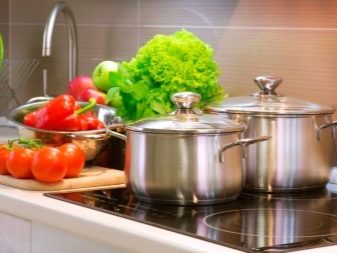
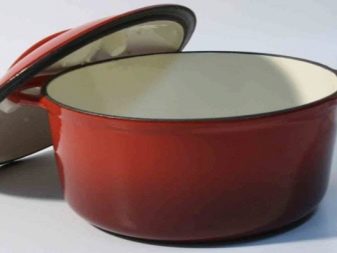
Care Rules
Metal dishes are unpretentious in cleaning. To keep her original gloss at home, The following rules should be followed:
- It is very simple to return the shine to a faded aluminum dish - for this you just need to boil water in it with vinegar or apple peel; if the product is blackened - it can be filled with whey or brine at night;
- Nickel products clean solutions of apple cider vinegar and salt, taken in a ratio of 1: 1;
- tarnished stainless steel appliances must be placed in a potato broth for a quarter of an hour, then wiped dry;
- rust on knives perfectly removes ordinary laundry soap;
- new baking sheets are greased with vegetable oil and calcined in a hot oven - thanks to this treatment, a thin greasy film forms on the surface, which will further protect the material from corrosion;
- a pan that has burnt overnight must be soaked in concentrated saline - in the morning all carbon deposits can be easily cleaned;
- After washing, metal dishes must be wiped dry with a rag or soft towel.
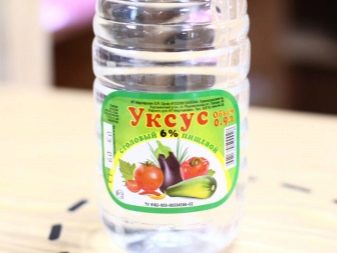
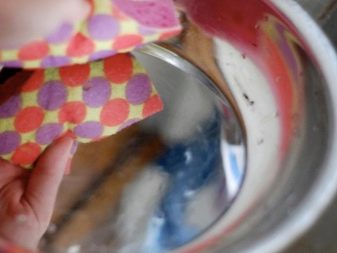
See more about the features of metal utensils in the next video.
